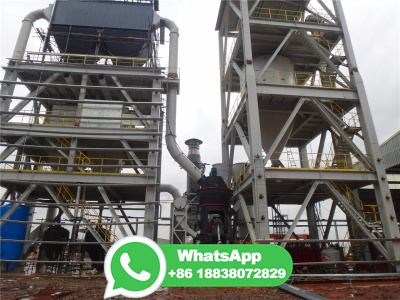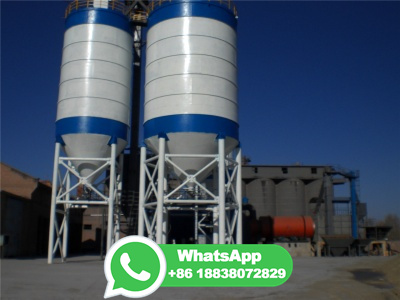
Table 2: Categories of Emissions from Iron and Steel Production Category of Emissions Treatment in Climate Leaders Emissions from use of purchased reducing agent (coal, coke) in blast furnace, sinter strand, EAF, etc. Stationary Combustion Guidance Reported using Core Module Guidance for Direct Emissions from Stationary Combustion Sources.
WhatsApp: +86 18203695377
The coal industry has two principal markets, that is, thermal coal (for energy use, including power generation and other applications such as the cement manufacturing sector), and metallurgical coal market (principally for steel making); but there are also other coal uses including conversion into gas, liquids, and other energy or chemical produ...
WhatsApp: +86 18203695377
While integrated players produce steel from iron ore and need coal as a reductant, EAF producers use steel scrap or direct reduced iron (DRI) as their main raw material.
WhatsApp: +86 18203695377
used in steelmaking after pig iron or hot metal produced in blast furnaces. DRI is produced by direct reduction of iron ore using carbon monoxide and hydrogen. Natural gasbased shaft reactors are commonly used in North and South America for DRI production while coalbased DRI is common in Asian markets [1].
WhatsApp: +86 18203695377
The Energy Information Administration estimates (as of October 2022) that in 2021, CO 2 emissions from burning coal for energy accounted for about 20% of total energyrelated CO 2 emissions and for nearly 60% of total CO 2 emissions from the electric power sector. In the past, fly ash was released into the air through the smokestack ...
WhatsApp: +86 18203695377
Drilling Methods Used in Coal Mines. By Jess Peláez / July 31, 2013. For coal deposits, like most other minerals, drilling is a key to identifying in detail the grade and size of the resource, both prior to mine development, and during operations. Mining operations employ a variety of drilling methods based on the requirements of the project.
WhatsApp: +86 18203695377
It is used as a source of heat for manufacturing processes. For example, bricks and cement are produced in kilns heated by the combustion of a jet of powdered coal. Coal is also used as a power source for factories. There it is used to heat steam, and the steam is used to drive mechanical devices. A few decades ago most coal was used for space ...
WhatsApp: +86 18203695377
Note: Global DRI production, including hot and cold DRI and HBI, has shown an upward trend since 790,000 mt was recorded in 1970. In 2020, well over half of global DRI output came from India (where production is largely coalbased in rotary kilns) and from , which in addition to using Midrex technology, has its own natural gasbased ...
WhatsApp: +86 18203695377
Fly ash is also a filler in paints, adhesives, and metal and plastic composites. It's commonly used as structural fill for road construction and fly ash can be used to make bricks, ceramic tiles, plaster, Portland cement, and readymix cement. Other building materials that may contain fly ash include hot mix asphalt, grout fill, wallboard ...
WhatsApp: +86 18203695377
The Handymax category is defined as ships with a cargo capacity between 40,000 65,000 dwt and used for shipping minor and major dry bulk cargoes. ... Panamax class bulker has a cargo capacity between 65,000 and 80,000 dwt and is used mainly for transporting coal in the Caribbean and Latin American regions. This definition also applies to ...
WhatsApp: +86 18203695377
For the coalbased direct reduced iron (DRI), the CO 2 conversion factor of "other bituminous coal" was used. For the net imported DRI in the (the type of DRI was not specified), we based our ...
WhatsApp: +86 18203695377
Coal plays a dual role in the Kiln. Part of coal is used as fuel to supply the desired heat so as to take the raw materials to the desired temp. But main role of coal is to supply carbon in the reduction process. Dolomite is used as sulphur scavenger which finally comes out with the char. Char contains ash of coal and other impurities of iron ore.
WhatsApp: +86 18203695377
Knowing the physical properties of coal is important in the preparation and use of coal. For example, coal density ranges from about to about megagrams per cubic metre, or grams per cubic centimeter. Coal is slightly denser than water and significantly less dense than most rocks and mineral matter.
WhatsApp: +86 18203695377
Nearly million tons of DRI were produced in 2006 over the world, some 80% of which were produced by gasbased processes, the left by DOI: / 98 | Page "A study on the accretion formation in DRI kilns and possible ways for its reduction" coalbased processes. However, total DRI output continued ...
WhatsApp: +86 18203695377
in shaft furnacebased processes, and DRI produced using natural gas has significantly lower CO 2 emissions than DRI produced using coal. In 2022, approximately % of the DRI produced was natural gasbased (, low CO 2 DRI), whereas the balance, %, was coalbased (, high CO 2 DRI). MIDREX Plants have produced a cumulative total of
WhatsApp: +86 18203695377
Brown and black coal are mostly used as a source of fuel for power stations. Burning the coal produces heat which is used to make steam, so the the coal is sometimes called thermal or steam coal. The steam spins turbines to generate electricity. In Australia in 2017 coal was used to produce about 60% of the nation's electricity requirements.
WhatsApp: +86 18203695377
station as % of the coal quantity and that of nonpit head station as % of the coal quantity can be considered. However, these losses are pertaining to the quantity of the coal and does not have any impact on the GCV of the coal. 3. GCV of the coal is decreased over a period as a result of the storage in the coal yard.
WhatsApp: +86 18203695377
OVERVIEW Coal is an important, widelyused source of energy and a chemical raw material, which is transported globally in large quantities; more than a billion tonnes of coal per year are transported by sea (IEA International Energy Agency, 2020). However, its carriage as a cargo is associated with a number of hazards and coal must . Continue reading GUIDANCE ON THE CARRIAGE OF COAL
WhatsApp: +86 18203695377
The naturalgasbased DRI processes, however, limit plant locations to places where natural gas is available. On the other hand, coalbased DRI plants are flexible as to plant location, because coal is widely distributed in large deposits and is easy to transport. This has significantly increased the production of coalbased DRI.
WhatsApp: +86 18203695377
DRIbased reduction emits less carbon dioxide than the integrated method and enables the production of highquality products in the EAF. Highquality products require the highest quality of steel scrap; if scrap is limited, the use of DRI is necessary to guarantee specific qualities. DRI production requires cheap and readily available natural gas.
WhatsApp: +86 18203695377
Direct reduced iron (DRI) is the product which is produced by the direct reduction of iron ore or other iron bearing materials in the solid state by using noncoking coal or natural gas. Processes which produce DRI by reduction of iron ore below the melting point of the iron are normally known as the direct reduction (DR) processes.
WhatsApp: +86 18203695377
India is the country with the largest DRI production, reaching 34 Mt in 2019, accounting for around a third of global DRI (WSA, 2020). The majority of Indian DRI is produced via the coalbased route, using rotary kilns, making partly use of domestic coal. Elsewhere in the world,
WhatsApp: +86 18203695377
Any coal with an ash melting temperature above 1050°C and a 10%40% VM content can be used in the Circofer. Coal with ash content <15% is preferable to keep the circulating load in the reactor, and in the case of direct charging into a smelter, the slag volume to a minimum (von Bitter et al., 1999). DRI produced by the Circofer process (>93% ...
WhatsApp: +86 18203695377
DRI processes can reduce CO 2 emissions by using natural gas instead of coal due to the replacement of carbon reductant by hydrogen from the methane. Many complementary gasification processes have been developed in order to synthesize the reducing atmospheres.
WhatsApp: +86 18203695377
Raw material utilization and waste generation for the DRI suggest that tonnes of ore, tonnes of noncoking coal and tonnes of dolomite are needed to produce 1 tonne of sponge iron and tonnes of solid wastes [2, 5].This implies that for every 10 tonnes of sponge iron produced, almost 2 tonnes of solid wastes are produced in the form of semiprocessed iron and coal char.
WhatsApp: +86 18203695377
BFs use coal to heat the iron ore while limestone and coke contain the chemical elements that will reduce the iron ore to pure iron. The DRI process typically uses natural gas or coal to heat the iron ore and syngas to reduce the iron ore to pure iron. Steelmaking. Two processes can change purified iron into crude steel.
WhatsApp: +86 18203695377
The steel industry accounts for 4% of all the CO2 emissions in Europe and 22% of the industrial carbon emissions in is one way of reducing emissions in the steel sector, either as an auxiliary reducing agent in a blast furnace (H2BF), which was covered in part 1 of this series, or as the sole reducing agent (H2DRI) in a process known as direct reduction of iron, which is the ...
WhatsApp: +86 18203695377